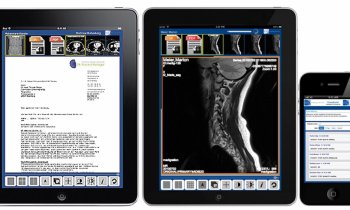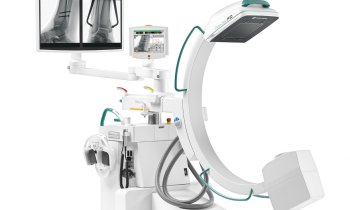Apps for disaster planning and flu forecasting
Johns Hopkins scientists have developed three new Web-based software tools designed to help hospital emergency departments, first responder organizations and others model and prepare for major disasters, including flu outbreaks.

The three new digital applications, or “apps,” developed by research teams at the Johns Hopkins National Center for the Study of Preparedness and Catastrophic Event Response (PACER), are available for free via the PACERapplications suite website. All of the new PACER apps will be featured at the U.S. Department of Homeland Security’s (DHS) University Centers of Excellence Innovation Showcase, to be held Feb.11 at the Immigration Customs and Enforcement headquarters in Washington, D.C. The new apps are:
•EMCAPS 2.0: An update to the popular Electronic Mass Casualty Assessment and Planning Scenarios program, this app was developed by a team headed by PACER researcher Jim Scheulen, M.B.A. Scheulen says it offers an improved, easy-to-use interface that allows users to estimate the number and type of casualties that could result from 11 different disasters identified by DHS. Scenarios that can be modeled in EMCAPS 2.0 include anthrax, improvised explosive device, open-air explosion, food contamination, blister agent (mustard gas), nerve agent (sarin), toxic gas release, explosion on public transportation, nuclear device explosion, pneumonic plague and pandemic.
•Surge: Developed by PACER Director Gabor D. Kelen, M.D., this app is an easy-to-use new tool for hospitals, intensive care units and other clinical units, including pediatrics, to determine surge capacity and the impact of various surge responses. Surge can simulate bed needs, the efficient movement of patients to open beds, discharge planning and other steps to increase bed capacity for disaster patients. As a published paper co-authored by Kelen notes, inadequate supplies of key resources during a surge event may be critical to patient care. Having a reliable tool to plan ahead, therefore, could make a big difference.
•FluCast: This forecasting program is designed to help hospital emergency departments, infectious disease experts and health departments reliably estimate the number of flu patients a specific hospital is likely to see in a given week based on a specific hospital’s historical data and data collected by Google Flu Trends. The application was developed by a team led by Richard Rothman, M.D., Ph.D., a professor and vice chair for research in the Department of Emergency Medicine, and Andrea Dugas, M.D., an assistant professor in the Department of Emergency Medicine. FluCast is based on groundbreaking research by Rothman and Dugas and their published research on Google Flu Trends data. FluCast offers advanced warning of potential influenza caseloads so that hospitals and medical institutions can take steps to prepare, such as increasing staffing.
Kelen, the chair of the Department of Emergency Medicine at the Johns Hopkins University School of Medicine, says the new apps ”should help fill the gap in accessible and reliable technologies” for disaster planners struggling to anticipate the need for supplies and other resources when time is critical. The new suite of PACER applications was developed with support from the DHS Science and Technology Directorate Office of University Programs.
Users must register and set up an account profile before gaining access to the new applications. Register to use and learn more about the apps here.
Learn more about the DHS University Centers of Excellence Innovation Showcase to be held Feb. 11 in Washington, D.C.
06.02.2014











